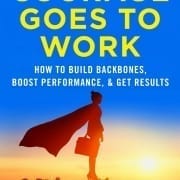How to Stop Drowning in Data and Find Actionable Insights

These companies had already invested significant resources into their data infrastructure. They were tracking millions or billions of data points in real-time and with some of the best technologies. Their challenge was actually using the data to make better decisions. They had this high-speed, modern car that no one knew how to drive. Just like you might admire a nice car as you walk by it, they were admiring their data infrastructure. But cars are meant to be driven, not just admired.
Data overwhelm is rooted in psychology and isn’t always solved by technology. In fact, technology might make it worse by increasing the volume of data. You can’t drink from a fire hydrant, and that same idea applies to data.
Data overwhelm is the classic “walking down the cereal aisle” problem. Imagine going to the supermarket to buy a new cereal. You don’t know what you want and instead will decide once you get there. The only problem is that there are a hundred choices of cereal. They all look surprisingly similar, and they might even cost roughly the same. How do you make a choice when everything looks the same?
That’s the problem with data overwhelm. You’re confronted with so many data points that you’re not quite sure what’s important and what’s noise. You may have discovered that 40 percent of your customers went to law school but so what? Should you change your marketing campaigns to talk about the law, or should you ignore this insight?
Now multiply this by 10, 50 or 100 insights, and you start to see the difficulties. Who’s to say what’s important or who could make that determination?
The underlying principle is to reduce the overall volume. It’s not about designing a process that could accommodate the weighing of hundreds of variables. It’s about reducing the number of variables that you’re working with. You want ways to rapidly remove large swaths of unnecessary data so you can deal with the remaining few.
This concept usually gets push back. Executives expect some kind of magical formula that can be applied to all of their data and spit out the right answer. They basically want a magic eight ball that considers all variables and then tells them what to do.
Instead, it’s best to work with fewer inputs to produce more outputs, which are decisions in this case. Once they move in a specified direction, it’s much easier to redirect the momentum towards the correct destination.
To help tackle data overwhelm and start finding actionable insights within your data, use these four strategies:
1. Use gatekeepers
The first strategy to deal with overwhelm is to employ gatekeepers. Companies are trying as much as possible to reduce friction in accessing data, but you may want to add friction in some cases. Some companies make it too easy to create reports, and everyone is constantly building them without thinking through what they actually want.
If you’re interested in learning more about the location of your customers, what will do you with the information? If you don’t have a good answer, your fishing expedition might prove fruitless. If your team struggles to sort through all the noise, you need to become more deliberate in where and how you fish. Gatekeepers can ask a few questions to clarify the overall goal of creating a report.
You want your own devil’s advocate who is skeptical of data requests. The Catholic Church created this position to argue against any given individual’s canonization (sainthood). It would assign someone to literally “advocate for the devil.” The healthy skepticism ensured that facts were uncovered and observed.
2. Decide WDIM — or What Does It Mean?
The second strategy is to obsess over WDIM. Whenever you come across an insight, your team should debate what this insight means (WDIM).
If you can’t come up with good answers, you may be dealing with a vanity metric. Vanity metrics are interesting to look at but don’t actually mean much to your business. If a metric can go up or down without forcing a significant behavior shift within your company, then you can safely ignore it.
3. Choose 3 things
The third strategy is “3 Things,” and it’s the simplest to apply. If you can’t figure out how to prioritize your data, pick the three things that fit the best or seem the best to you. Then analyze these three insights further and take action on them or discard them.
Wrong choices are seldom fatal, but paralysis is. Moving forward can be beneficial because you can now gauge the impact of your decisions and adjust as needed.
4. Manage expectations
For some teams, having the pressure of delivering on a deadline is the thing that helps them break through overwhelm. They focus on prioritizing, making clear choices and finding the WDIM in their data.
Work with your teams to manage expectations around how data is used, and the different scenarios in which data is appropriate and where it can be safely ignored.
Data overwhelm doesn’t have to derail your data strategy, but you need to think about it differently. Focus on the people behind the data, and you’ll start to see solutions to this pesky problem.
About the Author














Leave a Reply
Want to join the discussion?Feel free to contribute!